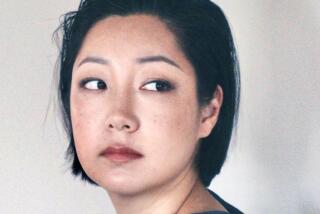When Korea Fought Japan : MANSEI! THE MAKING OF A KOREAN AMERICAN<i> by Peter Hyun (University of Hawaii: $17.50</i> ; <i> 196 pp.;photographs)</i>
- Share via
In 1976, Peter Hyun traveled from Hawaii to Korea to bury the ashes of his father and mother on a hillside of southern Seoul. He then toured his native country, which he had left more than 50 years before. From this emotional journey, he decided to write his family history and to affirm his identity. He aspired to document the pride and agony of the Hyun family’s life in exile from 1919 to 1924. His story is that of Korean nationalism, a theme that continues to reverberate today in the cries of hundreds of thousands of demonstrators in South Korean streets.
The book’s title, “Mansei”--meaning literally “ten thousand years”--refers to the famous Mansei Movement of 1919. On March 1, 2 million Korean youth rose in protest against Japanese colonial domination of their homeland. Japan had established a “protectorate” over Korea in 1905 and did not relinquish control until defeat in World War II.
Hyun opens his book with a detailed, eyewitness account of the Mansei demonstrations. Hyun was 12 years old at the time of the demonstrations, but the protest movement profoundly affected the course of his life. Due to Japan’s brutal suppression of the demonstrations, his family fled Korea for Shanghai to join their father, the Rev. Soon Hyun, a prominent member of the Korean independence movement.
Rev. Hyun had traveled to Shanghai one year earlier on a secret mission on behalf of the movement-in-exile. There, he helped found the Korean Provisional Government (KPG), bringing together three already existing provisional governments from Seoul, Vladivstok, and Shanghai. He was appointed KPG vice foreign minister and was assigned as ambassador plenipotentiary to the United States. In this position, he worked to win support for the KPG for foreign powers.
However, no foreign powers rendered aid to KPG; China was apparently afraid of Japanese retaliation, while the United States and other powers, although sympathetic, officially refused to give support.
Meanwhile, the Korean exiles in Shanghai--numbering about 700--experienced many hardships. Financial difficulties compounded problems in cultural adjustment. By 1922, these hardships forced many to disperse in search of livelihood.
Young Peter’s life in Shanghai was not always so dreary. He attended a Korean school, played soccer and baseball, and performed in drama, which became his profession later in life. He was also active in the Young Revolutionary Society, a secret club that distributed leaflets and tracked down suspected spies.
However, throughout these turbulent years of exile, Korean youth were haunted by the image of their “lost country.” For Peter Hyun, these tensions would remain unresolved. In 1923, he attempted to leave China on his own for the United States. His plans were stopped by his mother, who intervened again later to block his plans to go to the Soviet Union. Hyun next considered joining Korean guerrilla forces in Manchuria and participating in activities of the Korean Communist Party. His restless tensions would continue even after his family in 1924 settled permanently in Honolulu, where his father became minister of the Korean Methodist Church.
It would not be until 1976--after more than 50 years of exile--that Peter Hyun would be able to come to terms with these tensions and affirm his identity as a Korean.
Overall, “Mansei” is a powerful book. It is the first book that sheds light on the impact of nationalism on the life of one family during a pivotal period of modern Korean history. “Mansei” is about subjugation, humiliation, poverty and isolation. But, ultimately, it is also a story of the triumph of the human spirit.
More to Read
Sign up for Essential California
The most important California stories and recommendations in your inbox every morning.
You may occasionally receive promotional content from the Los Angeles Times.













